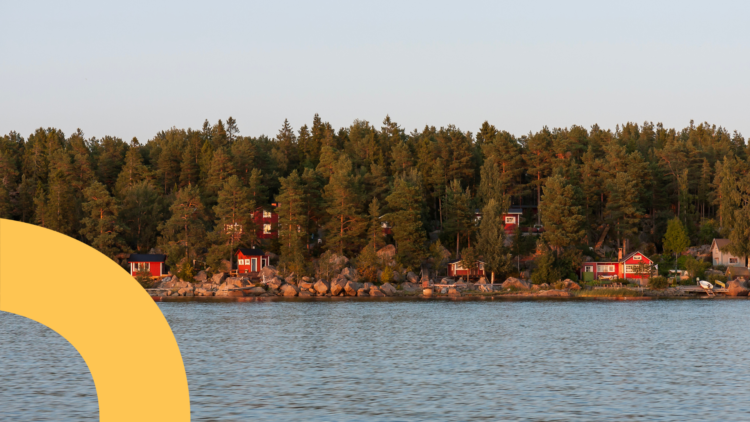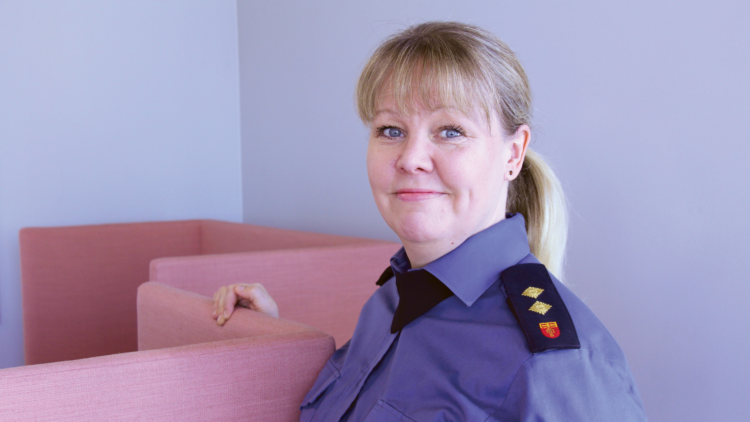Now is the time to put your home and cottage in shape for the summer: Safety tips for a nice holiday

There is always a fire risk with fireplaces, open flames and electrical appliances if they are not used correctly. When the cottage moves from winter mode to active use, the first thing you can focus on is the fireplace.
– You have to make sure that the fireplace dampers (flues) are open and the chimney draft is working properly. Cracks may have appeared in the chimney during the winter or something may have gotten in there, such as a bird’s nest, for example, says safety communication expert Tanja Nyqvist.
Slowly light the fire the first time it will be used. Instead of wood, you can, for example, burn a candle in the fireplace until you are sure it is working properly. The fireplaces and chimneys of a building in permanent use must be checked by a chimney sweep every year, and at least once every three years in buildings used for leisure time activities.
The fireplace dampers should not be closed too early, even if the fire in the fireplace seems to have gone out. If the fire does not get enough oxygen when burning, carbon monoxide will be produced.
– Carbon monoxide is a highly toxic odourless and tasteless gas. You can’t notice it unless you use carbon monoxide detectors, which can even be easily bought in grocery stores for a relatively small sum of money.
Due to the risk of fire, ash should not be emptied into a plastic container. A zinc bucket with a lid should be reserved for the purpose.

Download the 112 app
A smoke alarm is a lifesaver more familiar to many than a carbon monoxide detector. After the winter, you should check that the device and its batteries are working. The alarm should be renewed every 5-10 years. Exact device-specific instructions come with the alarms.
According to the Rescue Act, there must be one smoke alarm for every 60 square metres on each residential floor of an apartment. The smoke alarm is placed as high as possible on the ceiling, at least half a metre away from a wall.
Tanja Nyqvist recommends alarms for at least bedrooms and exit routes, such as hallways.
– There must be no loose obstructions in front of exits. It must be able to open windows serving as emergency exits easily and there must be fire ladders on the top floors.
For the home and cottage, it is also worth getting other fire-fighting equipment, such as fire blankets and portable fire extinguishers, and it is important to know how to use them. To alert rescue services or first aid responders, it is good to use the 112 app, which informs the emergency response centre about the exact coordinates of an accident site.
– When you talk on the phone through the loudspeaker, you can follow the instructions of the emergency response centre at the same time, Nyqvist advises.
When you talk on the phone through the loudspeaker, you can follow the instructions of the emergency response centre at the same time.
Make a fire notification
Grilling is a favourite pastime of many Finns on holiday. If you use a gas grill, the condition of the hoses and connections must be checked in advance. The grill must also be firmly in place and protected from strong wind, for example. If you don’t have your own patio, you should check whether grilling on the balcony is allowed or prohibited in the rules of your housing association.
– Due to the safety risks associated with grilling on the balcony, I recommend that people prefer to look for public grilling sites.
Campfires or other open flames may not be lit during a forest or grassland fire warning issued by the Finnish Meteorological Institute or in very dry or windy conditions. You always need the landowner’s permission to make an open fire and it must be extinguished carefully.
− Disposable grills are classified as open flames. They cool down very slowly, so you shouldn’t leave them on the ground for that reason either.
If you plan to have a large fire, notify the rescue services in advance using the form found on the website of the wellbeing services county. There is an obligation to report Easter fires and other traditional fires related to the season only if a rescue plan is required for the event.
You can burn leaves and twigs, if the municipal rules allow it and there are no fire warnings in effect.
– There is no permission to burn rubbish, and it must be delivered to a recycling station, reminds Tanja Nyqvist.